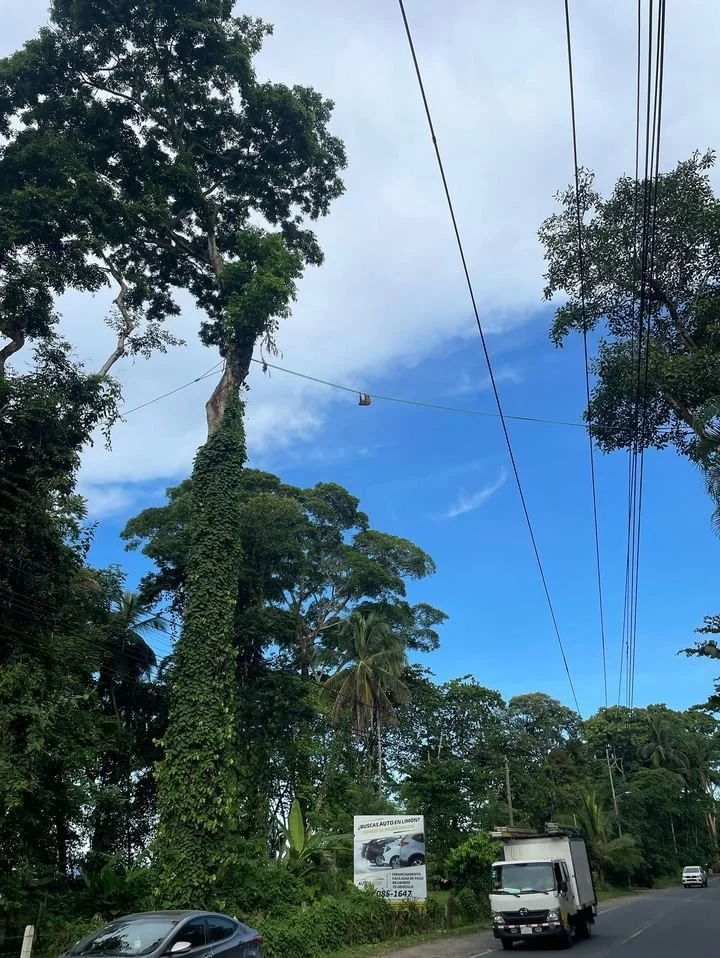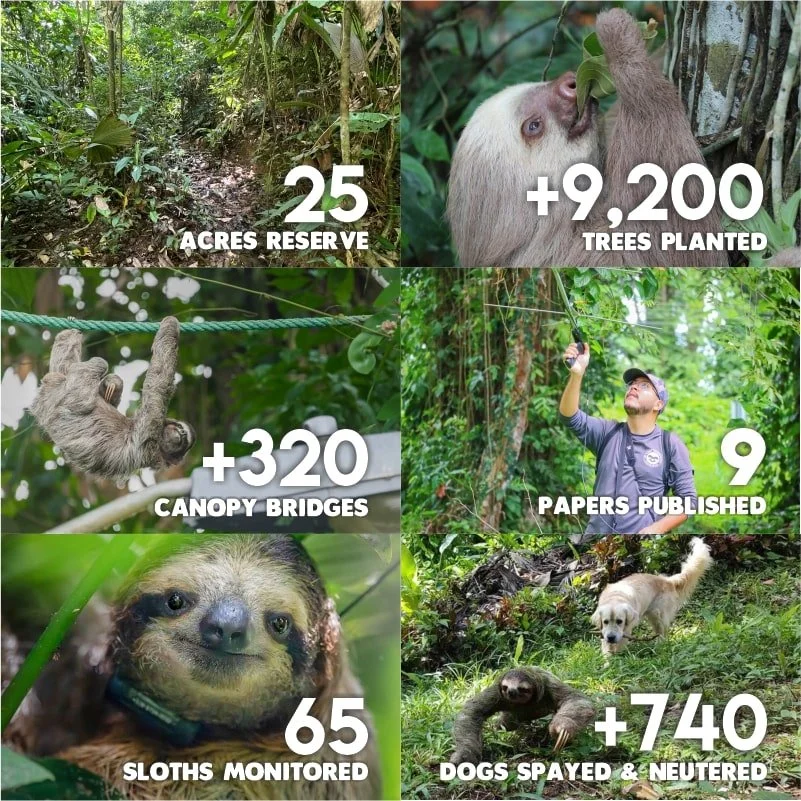Utopia For Sloths (And Humans)
If you’ve been following our work for a while, you already know that finding sloths in the most unnatural places here in the South Caribbean is something we encounter almost every day. While it may seem delightful for tourists and appear 'picturesque' to see a sloth above a restaurant’s dinner table, it highlights the serious issue of urbanization encroaching on sloth habitats.
In one of the videos we published on social media, while heading out to do fieldwork, Dr. Cliffe found a sloth by the side of a road while a couple of tourists were taking pictures of him.
Another Sloth Crossing a Road
The answer is that the road is crossing the sloth’s habitat. As Dr. Cliffe explains to the couple, if the sloth wants to go to the other side, he will go. And on this quest, the sloth is exposed to roadkills, dog attacks, or human harassment.
Dr. Cliffe took the sloth and placed him in a tree on the other side. We saved the spot to see if, in the future, we can install a canopy bridge there. We already know there is a sloth crossing the road there, and it’s likely this will not be the last time he attempts to do it again.
All Problems have a Solution
Over the years, we identified the main threats sloths face on a daily basis due to the urbanization of their habitats: roadkills, genetic isolation, dog attacks, electrocutions, and human exploitation as the main ones.
We have developed projects to minimize the threats to wild sloths: from helping create a 25-acre primary forest reserve, to reforesting urbanized areas, funding research and publications, and building a network of canopy bridges throughout the South Caribbean of Costa Rica.
Everything that we achieved with our community-based conservation programs was possible thanks to our supporters and donors.
Utopia for sloths
In the world of environmental conservation, we have good days and bad days. To be completely honest with you, some days feel like nothing we do will ever be enough—especially in a place like the South Caribbean of Costa Rica, which is currently under siege from the development of large real estate projects and resource exploitation. Even protected areas are now at risk.
The bad days can be really bad. Latin America is the most dangerous place for conservationists in the world; approximately 70% of all murders of environmentalists globally occur here. Some of our friends and colleagues have already received threats just for defending nature and wildlife. It’s terrifying to work under such conditions, never knowing whose interests you might be bothering.
But there is a brighter side. Our region is renowned for the resilience of its people. It stands as a beacon of social movements and a powerful example of successfully defending their territories—like in the 90s, when the community united to stop a project that sought to exploit the area for oil.
Executing our projects is like the work of ants: methodical, patient, and focused on building strong foundations. We take the time to build relationships—like with property owners where we install bridges or plant trees. We don’t want to do this quickly; we want to do it thoroughly because we believe that’s the path to lasting solutions. And when facing such enormous threats from powerful interests, our roots need to be deep and strong to withstand the storms.
“Utopia is on the horizon. I move two steps closer; it moves two steps further away. I walk another ten steps and the horizon runs ten steps further away. As much as I may walk, I'll never reach it. So what's the point of utopia? The point is this: to keep walking.” - Eduardo Galeano
Thank you once again for your support; it really makes our days brighter and gives us the hope to keep working for a better future—not only for sloths but for our local community as well. This year, we aim to fundraise $20,000 for SlothTober to continue all of our research and conservation initiatives, and we’re halfway to our goal (but we’re also halfway SlothTober!)




